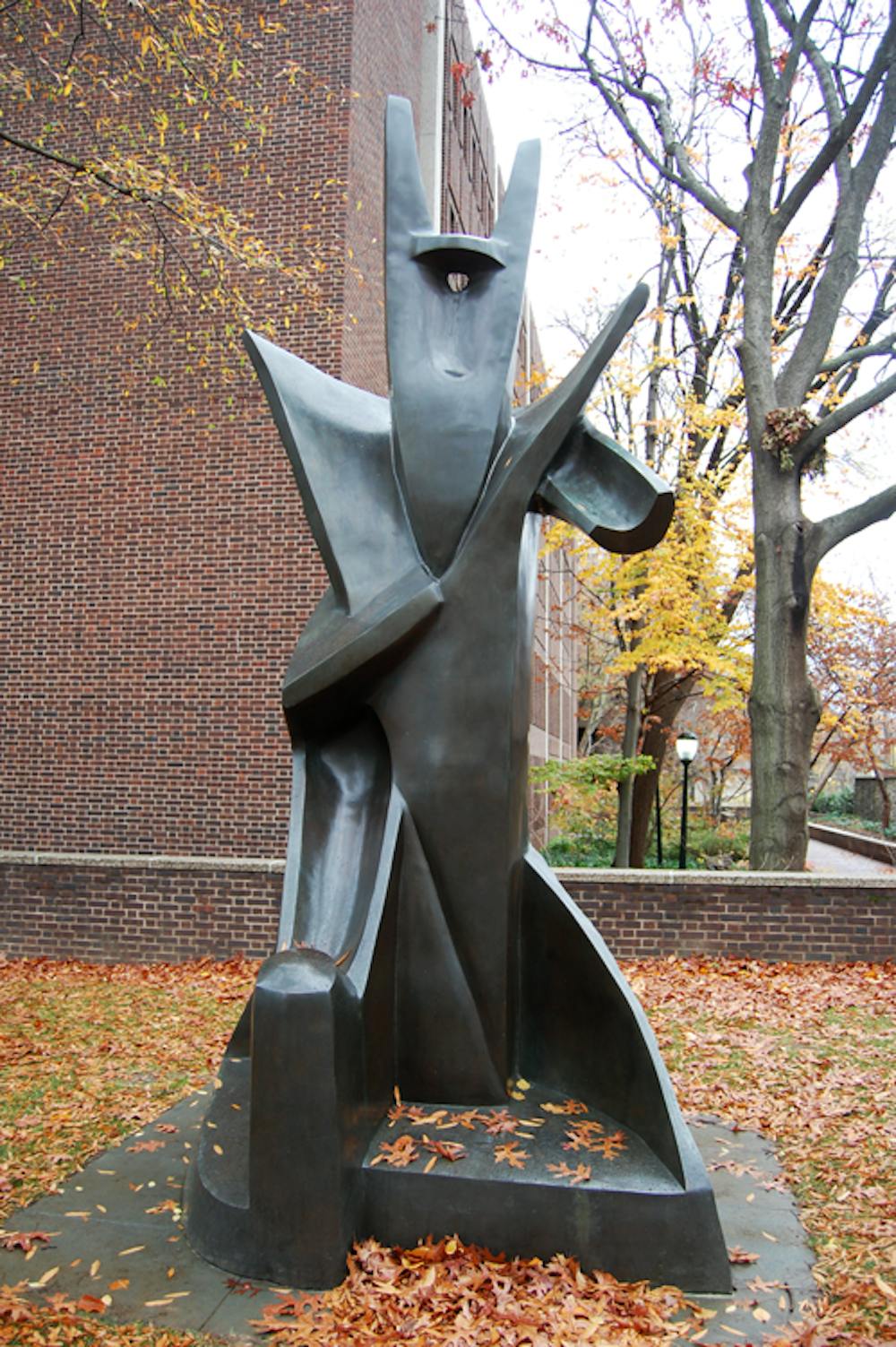Like most of the attendees of our fine institution, I have the secret desire to have myself immortalized in the form of a massive bronze statue. But until the impossible happens, one can gander at Alexander Archipenko’s statue King Solomon, a much more deserving figure than I. Portraying the king himself, though even Solomon might have had some trouble recognizing his cubist alter–ego, the sculpture dominates the walk from 36th and Locust to Walnut.
The work’s creation began in 1964, when Archipenko, an avant–garde Ukrainian artist, completed a four–foot King Solomon designed for enlargement. When he died shortly after, his wife oversaw its casting. 1968 marked the birth of the towering 14.5–foot, 1.5–ton King Solomon that we now know and love. In 1985, it was given to our dear old Penn by Mr. and Mrs. Jeffrey H. Loria, where it has stood ever since.
The work itself is cubist: semi–familiar forms mixed with hard–edged deconstructions of body parts. Through its size and heavy bronze coloring, viewing the work evokes the feeling of smallness in the face of power that one must have felt standing before King Solomon himself. I’ve seen this statue raise the eyebrows of many a passing student, but if you’re not willing to give this model of abstraction a chance, let the wise words of Archipenko convince you: “If you don’t like garlic, you can’t understand modern art.”







